Design and Development of Submarine
Introduction
Design and Development of Submarine – The idea of travelling underneath the ocean waters inside a closed vessel has been around for centuries. Some history says, Alexander the Great ventured below the waters of the Aegean Sea inside a glass barrel around 333 B.C. The next record of a submarine came more than 1900 years later. In 1578 AD British naval officer William Bourne described a wooden frame vessel enclosed in waterproof leather; which was rowed underwater. C Drebbel, a Dutchman patented his submarine, which was bound by waterproof leather, invented in 1598, was powered by oars allowing it to be rowed underwater and air was provided by tubes.
His boat was successfully tested in the Thames River and travelled at depths about 5 meters. In 1904, the French built the Aigrette, the first submarine to use a gas engine on the surface and an electric engine below. The US followed in 1911 with the F-class Skipjack submarine. It was powered by diesel instead gas engines. During First World War (WWI), Germans and their U-boats proved the worth of the submarine in the war theater. Germany was successful in submarine operation for the sinking of 11 million gross tons of Allied ships. In 1938, Auguste Piccard built his record- setting bathyscaphe Trieste. This 50-foot-long submarine still holds the record for deepest dive, about 12,000 meters deep in the south Pacific’s Marianas Trench.
Technology of Submarine
Submarines are completely enclosed vessels with cylindrical shapes, narrowed ends and usually two hulls. The inner or pressure hull protects the crew from the immense water pressure of the ocean depths and insulates the vessel from the freezing temperature. The outer hull shapes the submarine’s body. The ballast tanks, which control the submarine’s buoyancy, are located between the inner and outer hulls. Modern nuclear and electric submarines are of single hull. Stability and other submarine’s buoyancy are controlled by ballast tanks. Submarine’s size & position are calculated by design technology. To stay in control and stability, a submerged submarine must maintain a condition known as trim. It means submarine’s weight must be perfectly balanced throughout the whole body. Two trim tanks forward and aft help the submarine keep the accurate trim by either added or expelled water from them as needed.
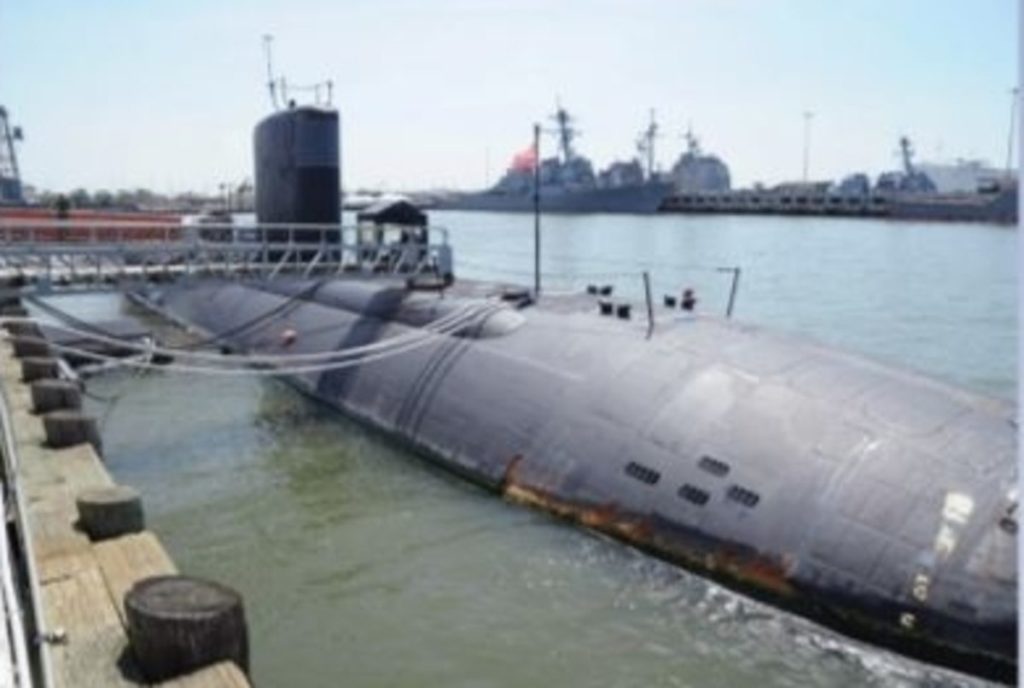
Once the submarine is underwater, it has two controls mechanism used for steering. The rudder controls side-to-side turning, or yaw. On the other hand diving planes, control the submarine’s rise and descent, or pitch. There are two sets of diving planes. The sail planes and the stern planes. Some modem submarines, like Virginia class of US Navy (the latest nuclear submarines), make use of bow rather than sail planes. In the above figure of a submarine, it has a tall sail that rises out of the submarine’s hull. Inside this fin-shaped sail is the conning tower (“conn” means to direct the steering of a vessel). Firstly, The periscope, radio and radar antennas are usually extended through the conning tower. In the early days, submarine was operated from conning tower. A periscope enables a submarine to see what is happening on the surface while remaining underwater. With the advances in technology, the entire look and operation of submarines change. In Virginia-class submarine, a series of mirrors and lens are used to view above the surface where colour cameras send visual images to large screen displayed in the ship’s control room.
Working Principles of Submarine
To function underwater, submarines are built a bit differently than surface ships that float on water. To travel under the water, the submarines must be signed with certain basic laws of nature, including Archimedes’ policies and age laws. Whether a submarine is floating or submerging; Depending on the buoyancy of the ship. Buoyancy of submarine is controlled by the ballast tanks which are found between the submarine’s inner and outer hulls or some special arrangement of ballast tanks. The submarine resting on the surface has positive buoyancy. It means it is less dense than the water around it and subsequently will float. At that time, the ballast tanks are mainly full of air. To submerge the submarine, it must have negative buoyancy. Vents above the belt tank are open. Through the flood ports the wind blows in the sea and the submarine begins to sink. For the rebirth of the submarine, the compressed air simply forced the beach to be broken into pieces. To keep the submarine upright, her metacentric height remains positive.
History of Submarine Development
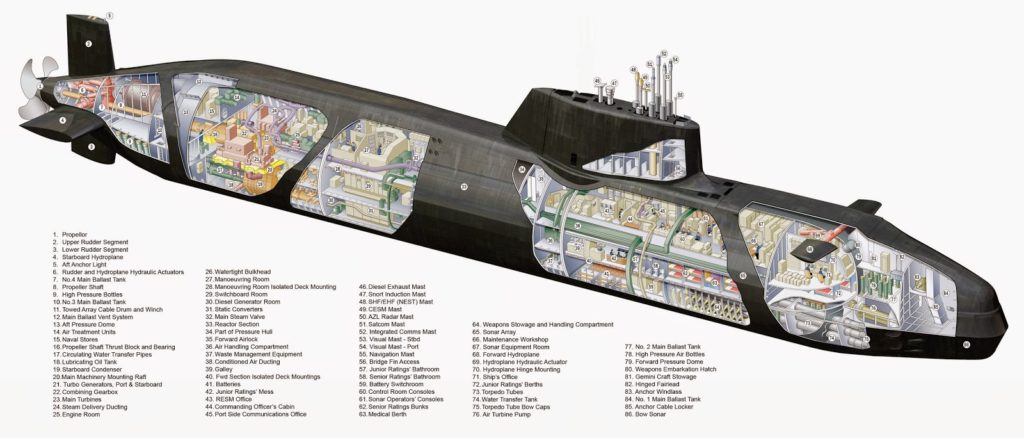
Initially, submarines depended on human’s energy to move. Submarine designed by Dribble was tested on the Thames River in 1620 and carried the King of England on one of its dives. It used oars to move itself along. In the mid-1770s, David Bushnell built a submarine Turtle that used hand and foot cranks for propulsion. This one-person submarine was the first used in war and exhausted its operator within a few minutes. It was the first to use diving planes to control depth.
But, due to the large and bulky size of the boiler, he failed. In the 1860s, the Confederates built steam-powered submarines and were never completely submerged. The first submarine in the US Navy, the USS Holland, used a gasoline engine while on the surface and an electric engine while submerged. The electric engine could recharge while the gasoline engine was being used. The electric engine allowed the submarine to travel underwater for a few hours, at a decent speed. The engine was relatively small, but the batteries were large, bulky and heavy. Finally, steam and gasoline engines were phased out by less-volatile diesel engines. In 1904, the French became the first to build a submarine Aigrette, which used a diesel engine on surface and an electric engine while underwater. The US followed the trend building its first diesel-powered submarine, the F-class Skipjack, in 1911.
Design and Development of Submarine Bangladesh Navy
These two innovations gave submarines the ability to remain submerged for weeks or months, and enabled impossible voyages such as USS Nautilus’ crossing of the North pole beneath the Arctic ice cap in 1958. Most of the naval submarines built since 1960s in the US and the USSR/Russia have been powered by nuclear reactors. The limiting factors in submerged endurance for these submarines are logistic supply and crew morale. In 1959, the first ballistic missile submarines were put into service by both super powers as part of the Cold War nuclear deterrent strategy.
Use of Submarine
Submarines were first widely used during World War I (1914-1918). Now- a-days, Military usage includes attacking enemy surface ships or submarines, aircraft carrier protection, blockade running, ballistic missile submarines as part of a nuclear strike force, reconnaissance, conventional land attack (by using a cruise missile), and covert insertion of special forces. Commercial/ civil uses for submarines include marine science, salvage, exploration and facility inspection/maintenance etc. Submarines can also be modified to perform more special functions such as search-and-rescue missions or undersable cable repair. Submarines are also used for tourism and underwear archeology.
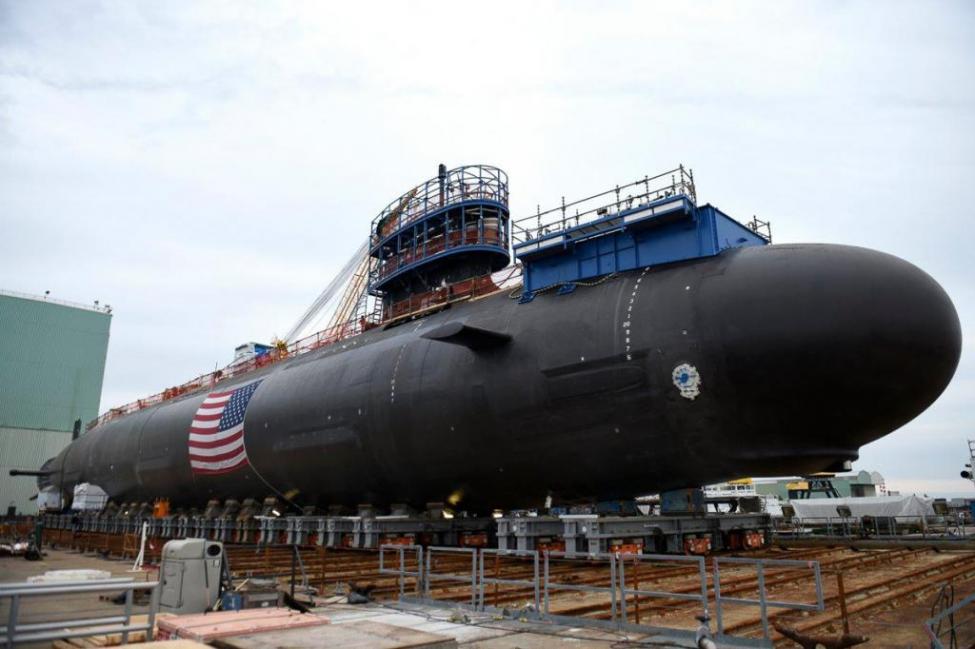
Modem submarines are cigar-shaped, sometimes called a “teardrop hull”. It reduces the hydrodynamic drag when submerged; but decreases the sea-keeping capabilities and increases drag while surfaced. Since the limitations of the propulsion systems of early submarines, their hull designs were compromised. Late in WWII, when technology allowed faster and longer submerged operation, hull designs became teardrop shape to reduce drag and noise. Today, in a modem military submarine, the outer hull is covered with a layer of sound-absorbing rubber, or anechoic plating, to improve stealth capacity.
Usually the pressure hulls of deep diving submarines are spherical instead of cylindrical. This allows a more even distribution of stress over the hull at the great depth. All post WWII; Soviet/Russian heavy submarines are built with a double hull structure. American and most other Western submarines switched to a single-hull approach. They still have light hull sections in the bow and stem, which house main ballast tanks and provide a hydro-dynamically optimized shape. But the main cylindrical hull section has only a single plating layer. The double hulls are being considered for future submarines in the US to improve payload capacity, stealth and range. Picture shown below is the nuclear submarine USS Greeneville in dry dock.
The submarine hull usually known as pressure hull is generally constructed of thick high strength steel with a complex structure. WWI submarines had hulls of carbon steel, with a 100-metre maximum depth. During WWII, high-strength alloyed steel was introduced, allowing 200-metre depths. High-strength alloy steel remains the primary material for submarines today. To exceed that limit, a few submarines were built with titanium hulls. Titanium can be stronger than steel, lighter, and is not ferromagnetic. Titanium alloys allow a major increase in depth and a Russian Alfa-class submarine successfully operated at 1,300 meters. However, the high cost of titanium construction led to the abandonment of titanium submarine construction as the Cold War ended.
Power and Propulsion
First submarines were human propelled. The first mechanically driven submarine was French Plongeur in 1863,that used series for slow speed and in parallel for high speed. During the WW II, German Type XXI submarines were designed to carry hydrogen peroxide for long-term, fast air-independent propulsion (AIP). Today several navies use AIP. Notably Sweden uses Stirling technology, where engine is heated by burning diesel fuel with liquid oxygen from cryogenic tanks. British Vanguard class submarine uses pump- jet propulsion instead of propellers.
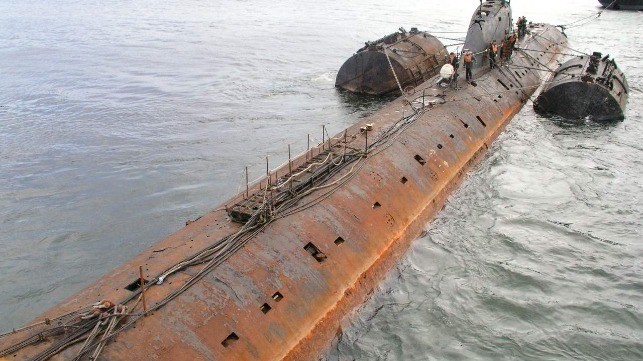
Weapons and Armament
The success of submarine is directly linked to the development of the torpedo, invented by Robert Whitehead in 1866. His invention is essentially the same now as it was 140 years ago. To increase combat endurance most WWI submarines functioned as submersible gunboats, using their deck guns against unarmed targets. With the arrival of ASW aircraft, guns became more for defense than attack. The ability of submarines to approach enemy harburs covertly led to their use as minelayers.
Modern submarine-laid mines are designed to be deployed by a submarine’s torpedo tubes. After WWII, both the US and the USSR experimented submarine that launched cruise missiles and anti-ship missiles such as Exocet and Harpoon. Ballistic missiles can also be fired from a submarine’s torpedo tubes, such as Tomahawk. Germany is working on the short-range IDAS (missile) which is launched from a torpedo tube and can be used against ASW helicopters as well as surface ships and coastal targets.
Sensors and Communication
A submarine will have a variety of sensors determined by its missions. Modern military submarines rely almost entirely on a suite of passive and active sonar to find their enemy. Active sonar relies on an audible “ping” to generate echoes to reveal objects around the submarine. Passive sonar is a set of sensitive hydrophones set into the hull or trailed in a towed array, generally several hundred feet long.
Hull mounted sonar is employed to back up the towed array, and in confined waters. Submarines also cany radar equipment for detection of surface ships and aircraft. Commercial submarines rely on small active sonar sets and viewing ports to navigate. Military submarines have several systems for communicating with distant command centres or other ships, such as; VLF (Very Low Frequency) radio for shallow depth and ELF (Extremely Low Frequency) for greater depths. To communicate with other submarines a sonar telephone is used.
Crew and Navigation (Design and Development)
Typical nuclear submarines have 80 to 120 crew. Non-nuclear or diesel-electric or AIP submarine typically have 20 to 30 crews. The conditions on a submarine can be difficult because crew members must work in isolation for long periods of time without family contact. Submarines normally maintain radio silence to avoid detection. Operating a submarine is dangerous, even in peacetime and many submarines have been lost in accidents. Submarine crew need dedication, strong will power and good team work.
Staying, eating, sleeping and all other day to day activities by the crew in a submarine are highly organized and systematic. Unnecessary movement and making noise by the crew of a submarine is highly restricted. Early submarines had a few navigation aids. But modern submarines have a variety of navigation equipment. Modern military submarines use an inertial guidance system for navigation while submerged, but drift error unavoidably builds up over time. To counted this, the Global Positioning System is occasionally used to obtain an accurate position.
The periscope allowing a view to the surface is only used occasionally in modem submarines. The most modem submarines have photonics masts rather than hull-penetrating optical periscopes. These masts must still be hoisted above the surface, and employ electronic sensors for visible light, infrared, laser range- finding, and electromagnetic surveillance. The most benefit to hoisting the mast above the surface is that while the mast is above the water, the entire submarine is still below the water and is much harder to detect visually or by radar or by ASW helicopter.
System and Support
With nuclear power, submarines can remain submerged for months at a time. Diesel submarines must periodically resurface or snorkel to recharge their batteries. The most modem military submarines generate breathing oxygen by electrolysis of water. Fresh water is produced by either an evaporator or a reverse osmosis unit. The primary use for fresh water is to provide feed water for the reactor and steam propulsion plants. It is also available for showers, sinks, cooking and cleaning purpose. Seawater is used to flush toilets, and the resulting “black water” is stored in a sanitary tank until it is blown overboard by using a special sanitary pump. Water from showers and sinks is stored separately in “grey water” tanks, which are pumped overboard by using the drain pump.
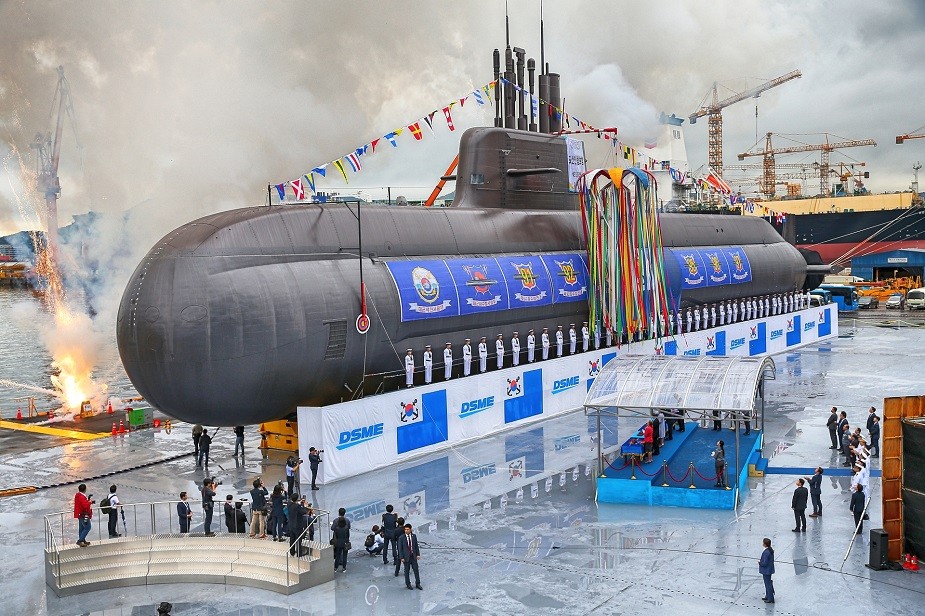
Conclusion
Submarines have one of the largest ranges of capabilities in any vessel, ranging from small autonomous (one- or two-person) vessels operating for a few hours, to vessels which can remain submerged for 6 months such as the Russian Typhoon class (the biggest submarines ever built in history). A conventional submarine operating on batteries is almost completely silent, leaving only the noise from crew activity. AIP submarines, conventional diesel-electric submarines with some kind of auxiliary air-independent electricity generator become more popular as military arsenal.
Commercial submarines usually rely only on batteries. Diesel-electric submarines have a stealth advantage over their nuclear counterparts. Some nuclear submarines such as the American Ohio class can operate with their reactor coolant pumps secured, making them quieter than electric submarine. Escape suits can be used by the crew to abandon the submarine while in accident.
Submarine is a costly affairs and its operation is extremely challenging and courageous. But military submarine is the worthy naval asset to deter any potential enemy with any capacity.
 আমি বাংলার কথা বলি
আমি বাংলার কথা বলি
